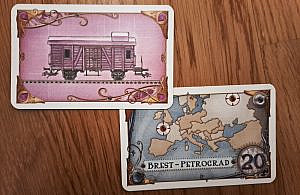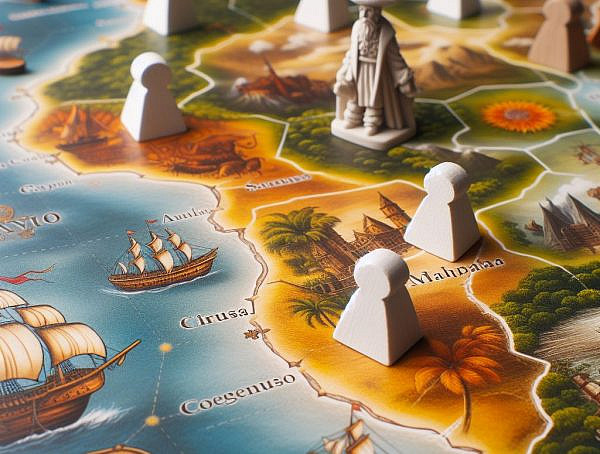Ticket To Ride Europe is a sequel to the original game that was played on the map of North America. The rules have remained the same, just on the map of Europe.
The goal in the game is to build railways across Europe. Each player is given 4 route cards that they try to accomplish on the board. Basically, this means building a connection between two cities far away from each other. If a player is successful, he’ll get as many points as pointed in the route card. However, if a player fails to build a route, they’ll have those points reduced.
What I dearly enjoy about this game is that while it is a more complex board game, it can still be finished within an hour. Other good but also more demanding games, such as Monopoly or Hotel, take too much time to play. Time is naturally saved because the flow of the game is quick. Each turn won’t take too long as you pretty much have two options: either you build something or then you collect more train cards. This creates a feeling of fast progress which in a way makes Ticket To Ride so good.
How are the railways built then?
In the end, it is rather simple. A player collects train cards of different colours and once they have enough cards that match with the marks on the board, they can play those cards from their hand. After that they can place their “tokens”. To grey marks on the board, you can use train cards of any colour. From every built section a player gets the same number of points as they used tokens. Here is the catch though. You can’t just build anything for the sake of it. Each player will have only 45 coloured train items to build with which means one has to be very careful of how they use them.

Almost the whole Europe is included on the board. There are many versions of the game in which you can for example play in Northern countries.
Ticket To Ride Europe has some new features that weren’t in the original version. For example, there are ferry and tunnel routes. Ferry routes require “multicoloured” locomotive train cards to be played when claiming them, and on tunnel routes there is a risk that additional train cards are needed. There are also stations that allow you to skip routes that someone else has built but that you would need regardless. However, I’ve noticed that this might be a bit confusing part of the game which makes it harder to follow. Therefore, I didn’t use stations when I played.
In theory, this game can be played in two ways, the friendly way, or the mean way. If you want to be mean you can block other players by building routes that you anticipate they would need. I prefer the friendly way, for most of the time at least.
While there are these highly strategic elements the game is not always won with big brain only. In Ticket To Ride luck is a major factor as well. Player’s success depends on what train cards can they collect. If you would need one extra red coloured card to complete your route, you might not get it or someone else takes it before you.
Additionally, there is a chance that other players manage to build certain sections before you. If that happens, one might have to use detours to complete necessary routes. For some this of course is a negative thing. If you’d want to play a game where the best strategist wins, you might want to look elsewhere.

Example of a train card and a longer route card that awards more points than other routes when completed.
In conclusion, Ticket To Ride is quite well designed game. There are strategic and more complex elements in the game but at the same time it is relatively easy to start playing. Therefore, everything seems to be well balanced. I also personally enjoy that luck might help you. That is why the game is anyone’s to win, and that is what makes it so great.
Basic info
Designer: Alan R. Moon
Publisher: Days of Wonder
Released: 2005
Number of players: 2–5
Age: 8+
Duration: 30–60 minutes
Pictures: Patrik Oksanen
A journalism student trying to learn the tricks of gaming and game journalism. Unfortunately, these days have very little time for games. Enjoying sports and racing games the most.
You might also like
More from Game Reviews
Mining, Mayhem, and Bugs: A Deep Rock Galactic Review
Fight monsters, mine riches, and cause chaos with your dwarf crew — welcome to Deep Rock Galactic!
Microsoft Solitaire: classic games to kill time
Perhaps the most played games in offices worldwide, Microsoft Simulator is a pinacle of design from the era where games …
Reviewing Elden Ring amidst Elden Ring Nightreign hype
Elden Ring Nightreign is coming soon, so now might be a great time to take a another look at Elden …















